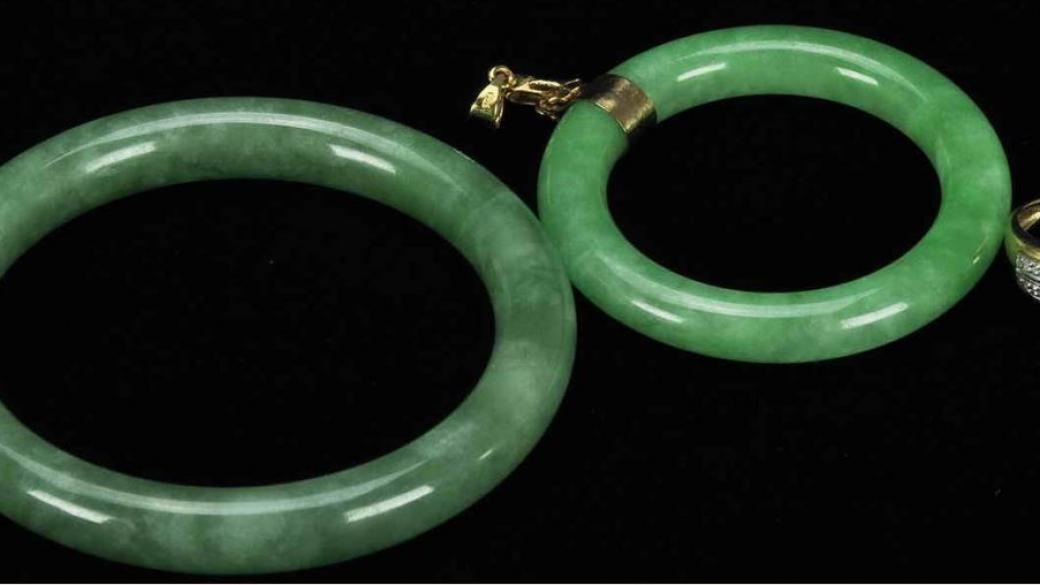China’s Green Gold
Jade is the amulet of immortality and wealth of the Chinese emperors

© ECONOMIC.BG / WikiBeijing
Since ancient times, jade has been sacred all over the world – items produced from jade have been found in ancient tombs around the globe, and the Old World civilizations decorated statutes of gods with these translucent green stones. Why is their green colour of utmost importance and what mysterious power does jade possess? As early as the 12th century, the Chinese described its properties in a tract of 100 volumes with 700 colourful illustrations. Jade was declared the national stone of China, described as the Chinese Diamond that guarantees immortality.
A Chinese Saying Goes: Gold Has a Price, Jade Is Priceless
In the long history of the art and culture of the Chinese Empire, jade has always held a special place, comparable to some extent with the place of gold and diamonds in the West. In Ancient China, the price of this stone was higher than that of gold and ivory. The “Passports” of the Emperor’s ambassadors were made of jade and jade coins were minted. Jade was used for the making of not only figures of gods, works of art and jewellery but also furniture and weapons for the imperial family. That is why in 5,000 BC, jade was well-known in China as the “Emperor's Stone.”
It was believed in China that wearing a processed piece of jade bestows Confucian virtues upon its owner, and therefore pieces of jade were embedded in furniture, jewellery, items and weapons. We can get an impression of what jade means for the people of Asia even today by visiting a jewellery shop in China, the jade auctions in Hong Kong or the Jade Market in Myanmar. More than 70% of the worldwide production of high-quality jade is concentrated there. The annual import of the precious stone to China exceeds 250 tons. The world’s largest piece of jade has been estimated at more than USD 170 million. It weighs 175 tons and was discovered in a mine in northern Myanmar.
According to analyses by Global Witness, the revenue from jade mining in Myanmar has been estimated at around USD 31 billion for 2014. This is almost half of the country’s GDP, which creates a global market worth around USD 50 billion. In the long run, this figure is equal to 48% of Myanmar’s official GDP and 46 times the government expenditures for healthcare.
Godliness and Legends in Green
In China and India, jade is mostly related to the gods, and that is why the mythological significance of the stone has to do with immortality. The belief in the sacred powers of jade is present even nowadays. It is believed that Buddha’s throne is made of jade. Taoist and Buddhist beliefs tell us that the supreme deity, the Jade Emperor, lives in heaven in a palace of jade.
Generation after generation, the Chinese tell the legend of how jade appeared in the All under Heaven Empire. It happened during the reign of an emperor, known as an honest and generous man, with a kind and compassionate heart – qualities that are important not only for a ruler but also for an ordinary man. He prayed and offered sacrifices to the gods regularly, and for this reason, they decided to reward him by sending a rain of jade to the Earth that didn’t stop for three days. His subjects were scared, but the Emperor, drawn by the beauty of the fallen stones, touched one of them. This touch to the godly gift bestowed upon him the knowledge of how stones can heal, as well as the most important qualities of the human character.
Another legend has it that every time Confucius was disappointed with the morality of the people around him, he used to sit down and play a musical instrument made of jade. Touching the stone material restored his spiritual harmony, put his thoughts in order, removed the weakness of will and released the creative potential of the ancient thinker.

Jade lions, Qing dynasty, Calouste Gulbenkian Museum, Lisbon, Portugal – Photo: Wikipedia
A Guarantee for Immortality
Ancient Chinese believed that jade was also related to immortality. Archaeologists have found members of the imperial family in ancient tombs, dressed in suits of jade tiles joined by a gold thread. The elite believed that this will protect the bodies from decay and will repel the evil spirits. For many centuries, people believed that the jade burial suits were only a legend because they couldn’t imagine that the rulers were so rich that they covered their bodies with the precious jade.
But when the Chinese princess Dou Wan died at around 104 BC, she was buried in a jade suit, which was thought to make her immortal. Her husband had died nine years earlier, and had also been dressed in a jade-tile suit. Their bodies were laid in two chambers underground, at around 150 km away from today’s capital – Beijing. The archaeologists were stunned by the jade suits that the bodies were covered with. Each suit was made of over 2,000 rectangular jade tiles connected by a gold thread. The cold smooth jade tiles, arranged into a beautiful mosaic, shaped Liu Sheng’s suit and are now exhibited in the National Museum of China in Beijing. These ceremonial suits made by polished pieces of jade are one of the most surprising proves of the mythical powers of the green stone and the belief that it leads to immortality. Dressing the royal couple in jade and gold was in line with the beliefs that the stone will get control of time and will help for the rulers’ immortality. Today, the bodies of the princess and her husband have turned into dust, but the precious metal and stone have survived. Their immortality suits impress not only with their green precise beauty, but also with the demonstration of power and wealth inherent only to a God.

Jade burial suit of Liu Sheng – Photo: Wikipedia


















